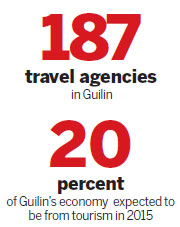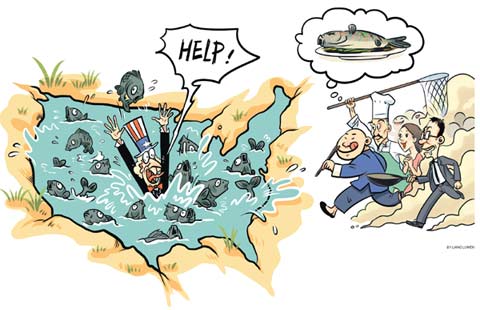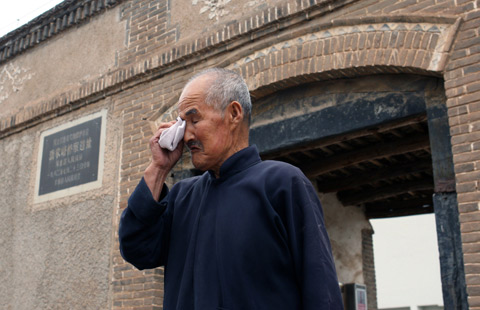Modern infrastructure serves today's tourists
By Li Yang (China Daily) Updated: 2014-10-13 07:12
Renowned for its picturesque karst landscape and unique local cultures, Guilin was recommended by the World Tourism Organization immediately after China opened up to the world in the late 1970s.
The Chinese government selected Guilin as a tourist destination for foreign visitors in 1973 during the "cultural revolution" (1966-76). Nearly 200 state leaders from around the world have visited the city.
In addition to 45 national-level tourist sites and four ancient villages, Guilin also has 187 travel agencies and about 200,000 beds for tourists in 3,471 hotels, 68 of them star-rated.
Last year, 36 million people visited Guilin, up 8.9 percent compared to 2012, including 2 million foreign tourists. The annual revenue from tourism was about 35 billion yuan ($5.8 billion), a rise of 26 percent.
Tourism revenue is projected to account for 20 percent of Guilin's economy next year and 40 percent of annual added value is estimated to come from the sector. By 2020, the two proportions are planned to reach 25 percent and 50 percent respectively.

With transportation infrastructure key to Guilin's connectivity, local authorities have a range of plans to improve networks on land and in the air.
It now takes about nine hours to reach Guilin from Beijing on a high-speed train that went into service last year. It is estimated about 16 million people will take the high-speed train to and from Guilin this year.
The city's highway system is connected to the national network and now carries about 200 million passengers a year.
The airport in Guilin handles nearly 6 million people a year following growth of 20 percent annually in recent years.
Two years ago, the State Council, China's cabinet, decided to provide all necessary support to build Guilin into an international tourist resort, a target to be realized in about eight years, according plans by the Guilin government.
The central authority's support ushers the city into a new phase of development, with increased investment in environmental preservation and infrastructure, and modernization in line with international standards to improve services for better traveling and consumer experiences.
liyang@chinadaily.com.cn

(China Daily 10/13/2014 page24)
- Beijing given 10% of central funds to curb air pollution
- Chinese VP calls for closer China-Russia youth exchanges
- Premier Li vows to safeguard WWII victory with Russia
- Beijing subway fares likely to double
- Policewoman killed in Xinjiang
- HK chief says reform must not abandon law
- China moves to boost
court transparency - Uygur kebab king takes a poke at poverty in SW China
- Mainland suspends cooking oil imports from Taiwan
- HK stability vital for development: former governor of Macao







